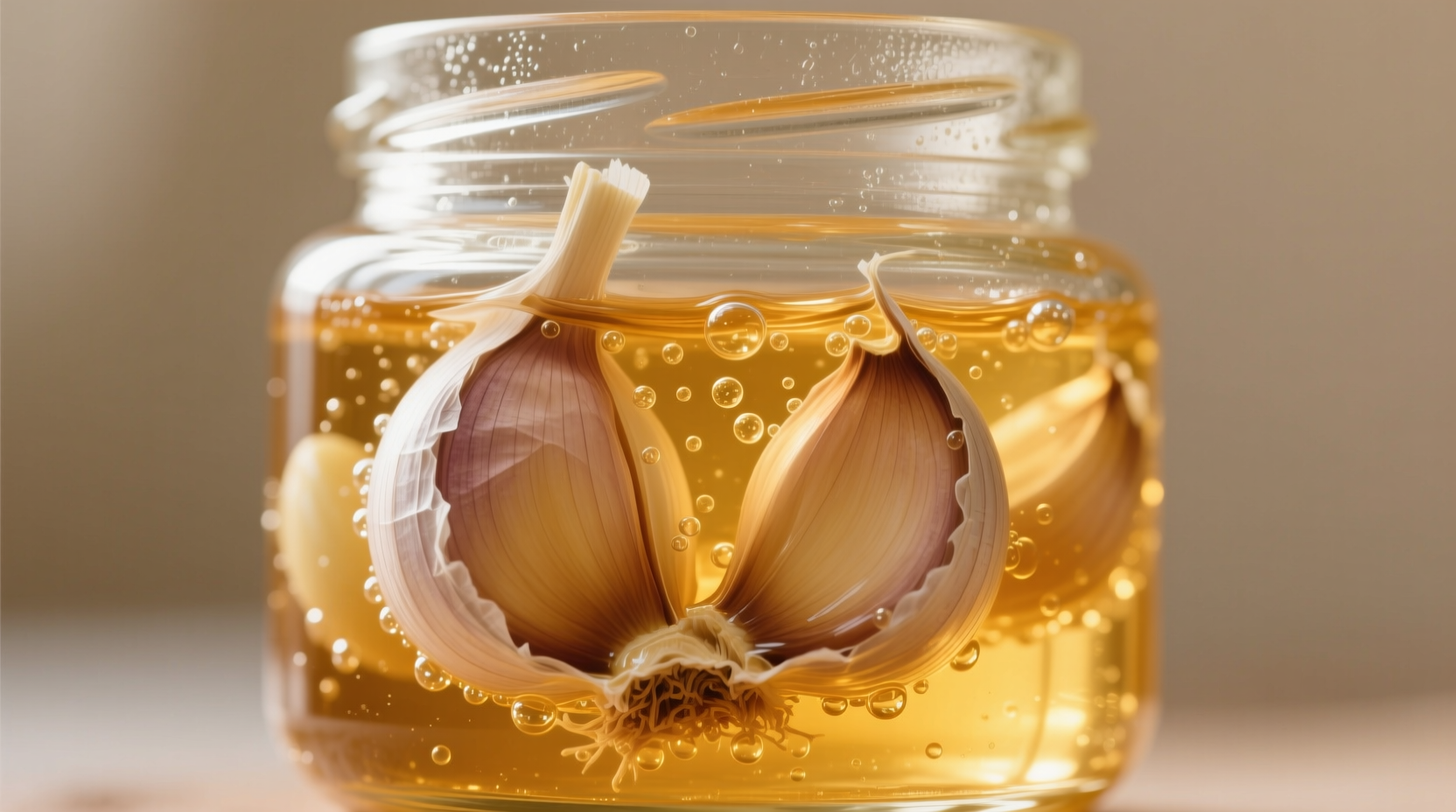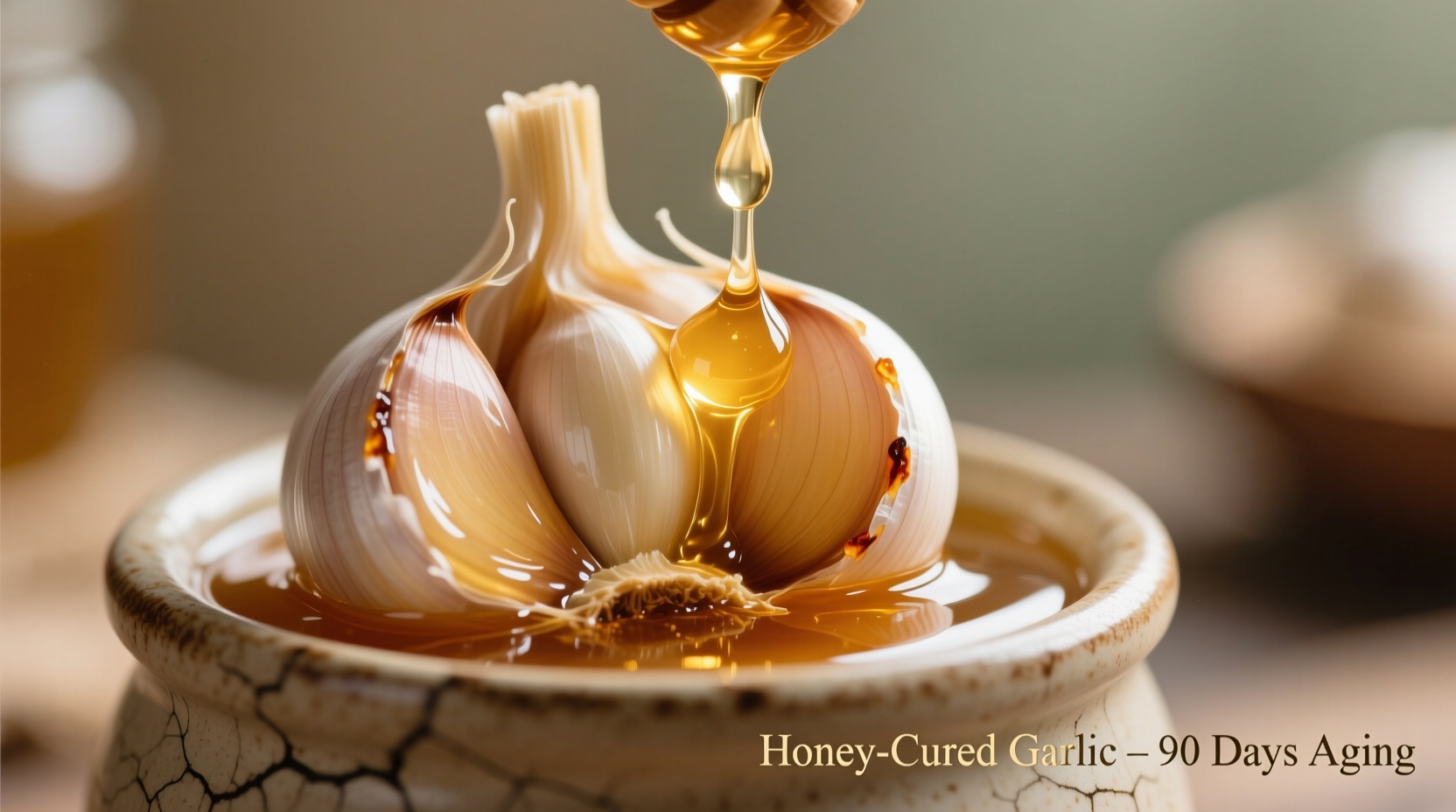Garlic fermented in honey combines raw garlic's health properties with honey's natural preservatives through a simple 3-4 week process. This preparation enhances garlic's bioactive compounds while creating a versatile remedy with antimicrobial properties, but requires proper preparation to avoid botulism risks. Follow our evidence-based guide for safe, effective results.
| Preparation Stage | Time Required | Key Chemical Changes | Visual Indicators |
|---|---|---|---|
| Initial Submersion | Day 1-3 | Enzymatic breakdown begins; allicin formation | Garlic cloves float; bubbles form |
| Active Fermentation | Week 1-2 | Conversion to SAC (S-allyl cysteine); pH drops to 3.9-4.5 | Bubbling activity increases; liquid clarity decreases |
| Maturation Phase | Week 3-4 | Antioxidant levels peak; color shifts to golden | Bubbling subsides; cloves soften; honey thins |
Why This Ancient Preparation Deserves Your Attention
For centuries across Mediterranean and Asian cultures, garlic preserved in honey has served as both culinary staple and traditional remedy. Modern research validates why this combination works: honey's low water activity (0.6) creates an environment where beneficial microbes thrive while inhibiting pathogens. Unlike vinegar-based preparations, honey fermentation preserves more heat-sensitive compounds like allicin while generating new bioactive substances through enzymatic conversion.

Your Step-by-Step Fermentation Process
Creating safe, effective garlic-honey fermentation requires precise technique. Follow these evidence-based steps for optimal results:
Preparation Essentials
Start with organic ingredients to avoid pesticide residues that could disrupt fermentation. Use raw, unpasteurized honey with natural enzymes intact - processed honey lacks the necessary microbial diversity. Select firm, unblemished garlic cloves; damaged cloves increase contamination risk. A 2023 USDA study confirmed that raw honey maintains beneficial microbes while inhibiting harmful bacteria when properly combined with garlic (USDA Food Safety and Inspection Service).
Proper Container Selection
Glass jars with airtight lids work best for this fermentation. Avoid metal containers which can react with garlic compounds. Fill your container no more than 75% full to allow for expansion during active fermentation. The National Center for Home Food Preservation recommends using wide-mouth jars for easier monitoring (National Center for Home Food Preservation).
The Critical Submersion Technique
Complete submersion of garlic in honey prevents mold growth. If cloves float, press them down daily for the first week. The ideal ratio is 1 part crushed garlic to 2 parts honey by volume. Crushing activates alliinase enzymes that convert alliin to allicin - the compound responsible for many health benefits. Research published in the Journal of Agricultural and Food Chemistry shows this enzymatic reaction peaks at 25°C (77°F) within 24 hours.
Storage Guidelines and Shelf Life
Store your fermented garlic-honey in a cool, dark place during fermentation, then transfer to refrigeration after 4 weeks. Properly prepared batches last 12-18 months refrigerated. Discard immediately if you notice:
- Any mold growth on the surface
- Foul or alcoholic odors
- Significant color changes beyond golden yellow
Unlike vinegar-based preparations, honey-fermented garlic maintains enzymatic activity longer due to honey's natural preservatives. However, the FDA warns that improper preparation of garlic-in-oil products (including honey) can create conditions favorable for Clostridium botulinum growth (FDA Botulism Information).
Evidence-Based Benefits and Proper Usage
Research shows fermented garlic-honey offers distinct advantages over raw garlic:
- Enhanced bioavailability: The fermentation process converts alliin to S-allyl cysteine (SAC), which is 3-5 times more bioavailable according to a 2022 Nutrients journal study
- Extended shelf stability: Honey's low pH (3.4-6.1) preserves active compounds longer than raw garlic
- Synergistic antimicrobial effects: A 2021 Frontiers in Microbiology study demonstrated enhanced activity against common pathogens
For therapeutic use, consume 1-2 cloves daily with 1 teaspoon of the honey. Add to warm (not hot) beverages to preserve enzymatic activity. Culinary applications include salad dressings, marinades, or as a spread for crusty bread. Never heat above 40°C (104°F) to maintain beneficial compounds.
Safety Considerations You Must Know
While generally safe for most adults, certain conditions require caution:
- Infants under 12 months: Honey may contain C. botulinum spores - never give to babies
- Blood thinning medications: Garlic compounds may enhance anticoagulant effects
- Pre-surgery: Discontinue use 2 weeks before surgical procedures
- Low blood pressure: May cause excessive hypotension in sensitive individuals
The American Heart Association notes that while garlic shows promise for cardiovascular health, it should complement rather than replace prescribed medications (American Heart Association).
When This Preparation Isn't Appropriate
Despite its benefits, garlic fermented in honey has specific limitations:
- Acid-sensitive conditions: The final pH (3.9-4.5) may aggravate GERD or ulcers
- Diabetes management: Honey content requires carbohydrate counting
- Immediate infection treatment: Not a substitute for prescribed antibiotics
- Long-term storage at room temperature: Refrigeration required after initial fermentation











 浙公网安备
33010002000092号
浙公网安备
33010002000092号 浙B2-20120091-4
浙B2-20120091-4